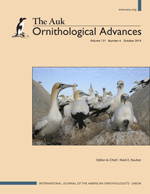The alternative prey hypothesis (APH) suggests that the functional and numerical response of predators to fluctuating rodent populations may drive annual variation in predation pressure on other available prey such as bird eggs. Most studies that have provided evidence supporting the APH in arctic bird populations have been conducted in the eastern hemisphere, and considerably less evidence for APH has emerged from western hemisphere populations. We tested the hypothesis that predation pressure on shorebird nests would increase as lemming abundance decreases due to apparent competition between lemmings and shorebirds via their shared predators in the eastern Canadian High Arctic. Over a period of 5 years on Bylot Island, Nunavut, Canada, we found that lemming abundance had a significant negative effect on predation risk as measured by artificial nests. Survival probabilities of artificial nests were also negatively related to fox abundance but positively associated with the abundance of breeding avian predators, likely due to predator exclusion around avian predator nests. Models of daily nest survival for real nests also indicated that interannual variation in nest survival was best explained by lemming abundance. Combined results from both artificial and real nests indicate that fluctuations in lemming populations likely have an indirect effect on predation pressure on shorebird eggs in the Canadian High Arctic, although mechanisms explaining the observed relationship require further investigation.
How to translate text using browser tools
20 August 2014
Predator-mediated interactions between lemmings and shorebirds: A test of the alternative prey hypothesis
Laura McKinnon,
Dominique Berteaux,
Joël Bêty

The Auk
Vol. 131 • No. 4
October 2014
Vol. 131 • No. 4
October 2014
apparent competition
Arctic
artificial nests
Baird's Sandpiper
nest success
nest survival
White-rumped Sandpiper




